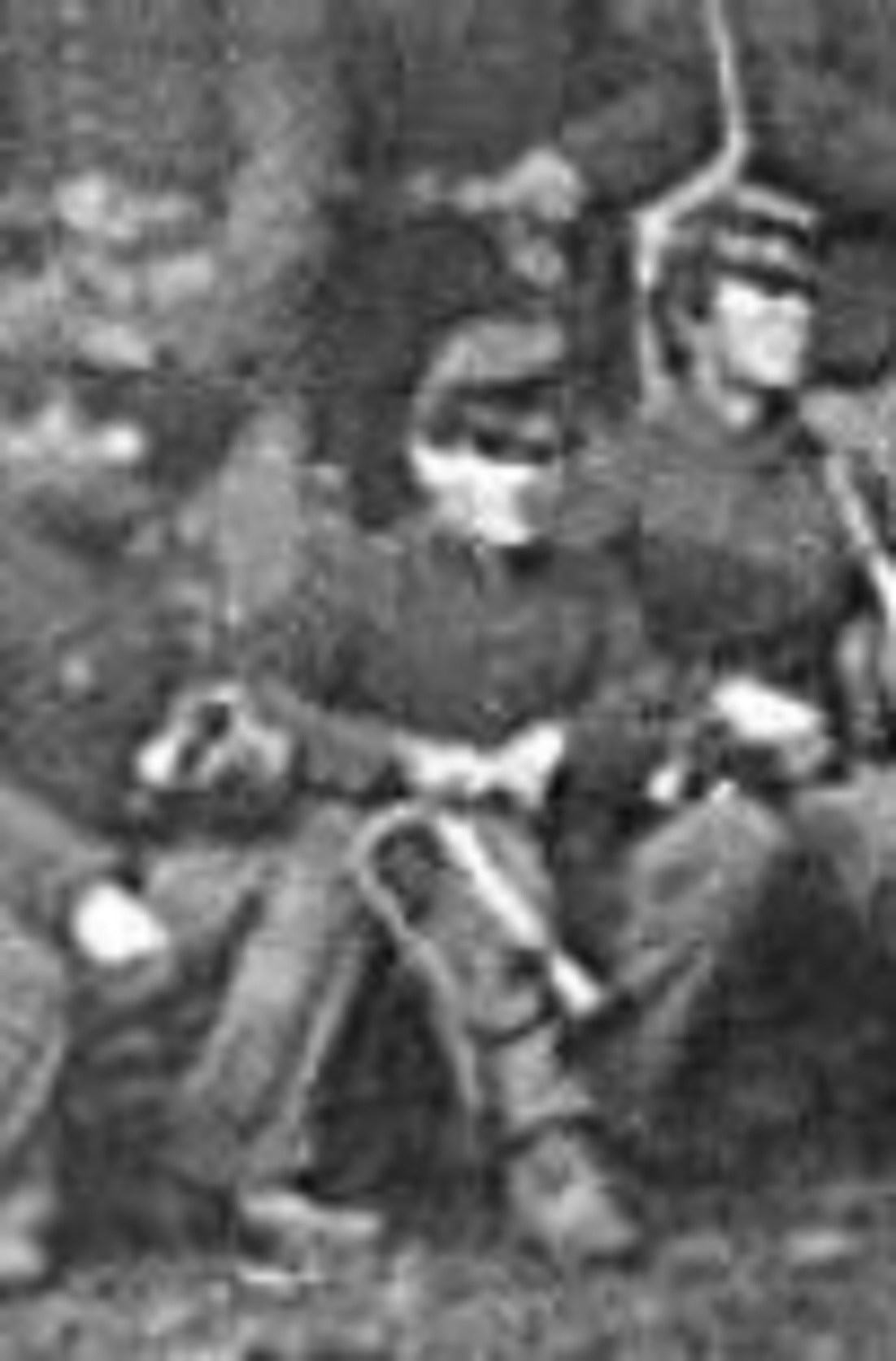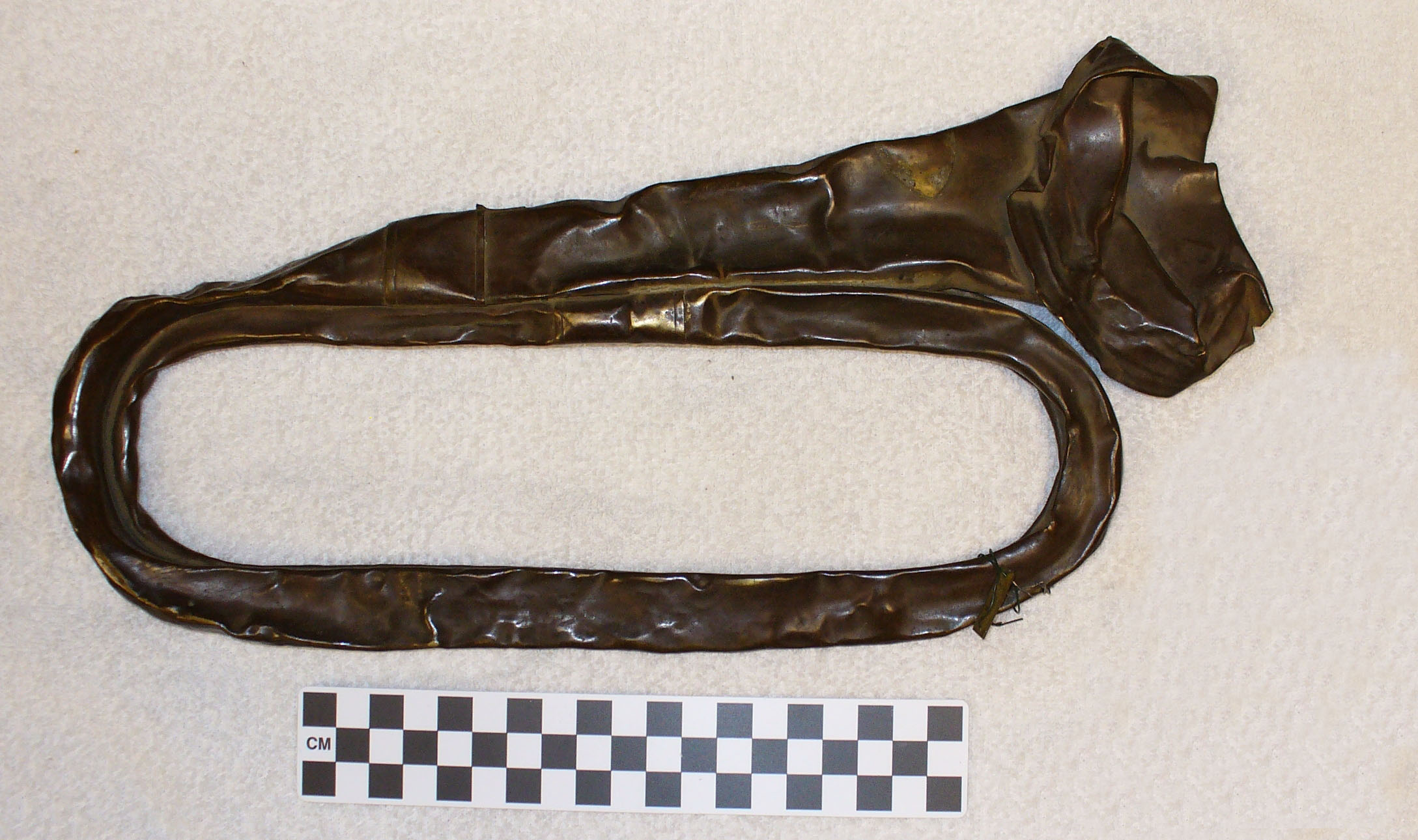Adolph Metzger, the Valiant Bugler
I am always awestruck by the stories of bravery of our fighting men and women. However, to be awarded a medal for any bravery, said bravery must be witnessed. I suppose this is a reasonable caveat as otherwise a lone survivor would be able to write his own story of derring do. It is therefore interesting for me to think of all the people who did obscenely brave things that were never witnessed and thus never rewarded.
One example I'll give of this is Private Adolph Metzger, Company C, 2nd US Cavalry. From Württemberg, Germany, he first enlisted in 1855 in Philadelphia, listing his vocation as "laborer". Enlisting the in the Army was somewhat common for German immigrants in this time period so they could better learn English. Germany still operated under a guild system for tradesmen, so once immigrants learned English they could use those learned skills in the open marketplace here.
His enlistment noted that he was 21 years old, 5'5" tall, and described as having a dark complexion, common for those working outdoors. Pay back then for privates was a stately $13 a month. He was first posted with the 1st US Mounted Rifles in the American Southwest. Largely made up Irish and German soldiers, the 1st Mounted Rifles later became the 3rd US Cavalry. He served five years before mustering out, still a private, in the New Mexico Territory in 1860.
After the election of Abraham Lincoln he reenlisted for the coming Civil War. Metzger was assigned a bugler in the 2nd US Cavalry. The 2nd Cavalry was tasked with protecting Washington D.C. The regiment fought in many of the Civil War's most well known and pivotal battles, including the Siege of Yorktown, the Second Battle of Bull Run, and the Battles of Antietam, Fredericksburg, Chancellorsville, Gettysburg, Spotsylvania Court House, and Cold Harbor.
Like the role of the color guard, the rank and position of a bugler is hard to fully comprehend today. In the age before long range or wireless communication, buglers and other musicians, principly drummers, were important parts of any regiment. They were used to provide direction to the troops, as buglers did to sound reveille, retreat, and taps, and set the cadence for troop movements. So important were they, we are still familiar with these calls today.
Ranking with or just above privates, musicians such as Metzger also served immeasurably as the morale, welfare, and recreation element of their day. Armies of the time marched for hundreds, if not thousands, of miles on foot. Battles were spread out over the course of months into years, seeing soldiers living in hasty, muddy, disease and insect-ridden camps far from home. Having an outlet in the form of music helped commanders keep a lid on what would otherwise be a powder keg.
Metzger was part of the hard fighting in the Gettysburg campaign when the 2nd Cavalry went up against Jeb Stuart's Confederate cavalry in a head-to-head charge, the first Union cavalry regiment to do so. Though they were repulsed without effectively breaking the Confederates, the battle left Stuart's reputation hurting in the South. Once the main Battle of Gettysburg was underway, the 2nd US Cavalry continued to fight Stuart's cavalry, eventually dismounting and skirmishing with the Confederates in a delaying action to await the arrival of the main Union force.
Metzger re-upped for a third hitch in the summer of 1864, when General Grant had decided to end the war at all costs. The 2nd Cavalry continued to be pivotal, fighting in at least four major battles in the summer of '64 and into the fall. Somehow Metzger was able to get away to marry Fredericka Cooper in Philadelphia on August 2nd.
Metzger survived the war, which had seen the 2nd Cavalry earning 14 battle streamers and 5 Medals of Honor. Shortly after the war the US violated a treaty with the Sioux, building three forts along the Bozeman Trail, leading to the goldfields of Montana. The Lakota Sioux, still a sovereign nation, with their allies the Northern Cheyennes and Arapahos, besieged the three forts. Thus began Red Cloud's War, which was the only successful Indian campaign in the West.
By December 1866 the 2nd Cavalry was with the 18th Infantry at Fort Phil Kearny, Dakota Territory (in the part that would eventually be Wyoming). Here they were posted under Colonel Henry Carrington, a Yale-educated Civil War vet who had spent the war in administrative postings. Among Carrington's officers was Captain (brevet Lieutenant Colonel) William Fetterman, a civil war vet who, to put it mildly, did not think highly of the Lakota as a military foe.
On December 6, Metzger was part of a group operating under Fetterman when two cavalry troopers, Lieutenant Horatio Bingham and Sergeant Gideon Bowers, chased some Lakota warriors into an ambush. Metzger and the other troopers barely escaped when they made it back to Carrington who ordered him to sound retreat.
After this disaster, Carrington instructed Fetterman never to pursue any Indians out of sight of the fort. Around noon on December 21, a work party of woodcutters and 90 soldiers providing security came under attack from Native forces. Fetterman set out with two other officers, 27 men of the 2nd Cav, 49 men of the 18th Infantry, and two civilian scouts. The two civilian scouts were both Civil War veterans who were eager to try out their snazzy new 16-shot Henry repeating rifles they'd just gotten.
Fetterman's cavalry, on their mounts, led the way for the foot soldiers. Under orders to "under no circumstances" go over Lodge Ridge Trail, the relief force crossed the ridge. Once in the ambush zone, out of sight of the fort, at least 1,000 warriors and as many as 1,500 came out of the snow-filled gullies and attacked. The Cheyenne and Arapaho took up the west and the Lakota the east. Interestingly, among those selected to be the decoys was a young Sioux warrior, Crazy Horse. The Natives at this time had few rifles and were armed mostly with arrows, spears, knives, and blunt weapons.
The civilian scouts, along with about a half-dozen troopers with their own repeating rifles sought refuge in some nearby rocks. They hit an estimated 60 Indians and associated horses before being overwhelmed and literally cut into pieces by the warriors.
The 49 infantrymen were next. The Natives rushed in as soon as they saw the flashing ramrods of their single-shot Springfields. The warriors clubbed or slashed the soldiers to death.
Fetterman and his XO, Captain Frederick Brown, did not, as the story was told, shoot each other in the temples with revolvers, but it is thought that maybe Brown might have shot himself. Fetterman's official cause of death, as listed by the Army, is that his throat was slashed. Many of the soldiers died, piled into heaps, as the Indians brutally hacked into their bodies.
Adolph Metzger meanwhile was not one of them. He was amidst the cavalrymen when the shower of arrows came in. Estimates have the number of arrows striking the formation at up to 40,000, certainly enough to darken if not outright black out the sky. Metzger fired his seven-shot Spencer until it ran dry.
As the enemy closed in, Metzger refused to give up the fight. Engaged in mortal hand-to-hand combat, Metzger, most likely unarmed, turned to the only tool he had, his bugle. Wielding it as an instrument of death, Metzger swung out at his foes. He struck several Indians about the head, hitting them so hard and with such ferocity that his bugle became a flattened, twiste, barely recognizable hunk of brass. Wounded more than a dozen times, Metzger finally fell to the vastly numerically superior enemy force.
The ambush had lasted only 40 minutes. In the aftermath of the battle, it was found only six of the 81 soldiers had been killed by gunshot wounds. The rest had been savagely beaten to death with war clubs, stabbed with spears, or hit with arrows. The natives then ritually mutilated the bodies of the fallen soldiers before leaving.
***WARNING: For the squeamish, skip the next paragraph***
Carrington described the scene in his report the next day: scalps removed, eyes torn out and put on rocks, teeth hammered out, noses and ears chopped off, skulls bashed and brains removed (to also be put on rocks), hands and feet severed from the corpses, and private parts crudely hacked off. The civilian scouts had their faces smashed into an unrecognizable bloody pulp and one had been pierced by more than 100 arrows. Not even the animals were safe from the savagery. The Natives killed the soldiers' pet dog. The only survivor of the battle on the US side was a single Army horse, Dapple Dave, who was so wounded he had to be shot.
However, respecting a noble warrior, the Indians left one soldier undesecrated, Private Adolph Metzger. They carved a simple cross into his chest, a symbol that he had died facing the enemy. They then covered his body with a buffalo robe, as if sleeping. With his battered bugle.
When the soldiers around him had fallen, committed suicide or were thinking about it, Metzger made an iron-willed stand, determined to make them pay if they wanted to take his life. Adolph Metzger's unwavering heroism in the face of impossible odds and sure death had won the esteem of the warriors.
No medals were awarded. His name is not remembered except in obscure corners of military history. Nobody except the enemy saw Metzger's heroic last stand. The story was largely pieced together after the fact. That the Natives singled him out for respect tells me volumes about the way in which he died.
Adolph Metzger's bugle was recovered by ranchers in the 1880's and turned over to the Jim Gatchell Memorial Museum, Wyoming in the 1950's. In 2016 it was named the most significant historical artifact in the state. I can't say I disagree with that assessment.


Comments
Post a Comment